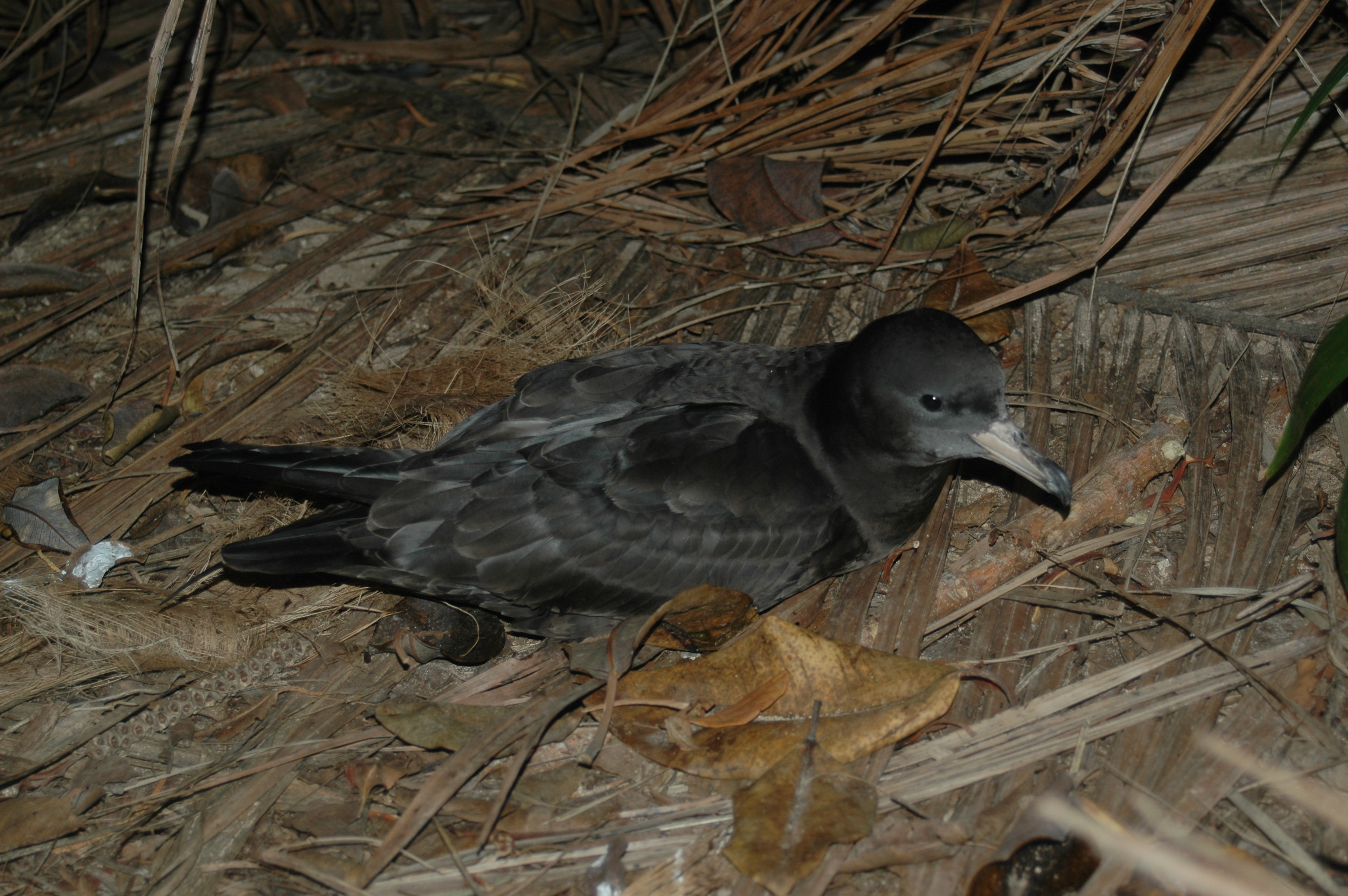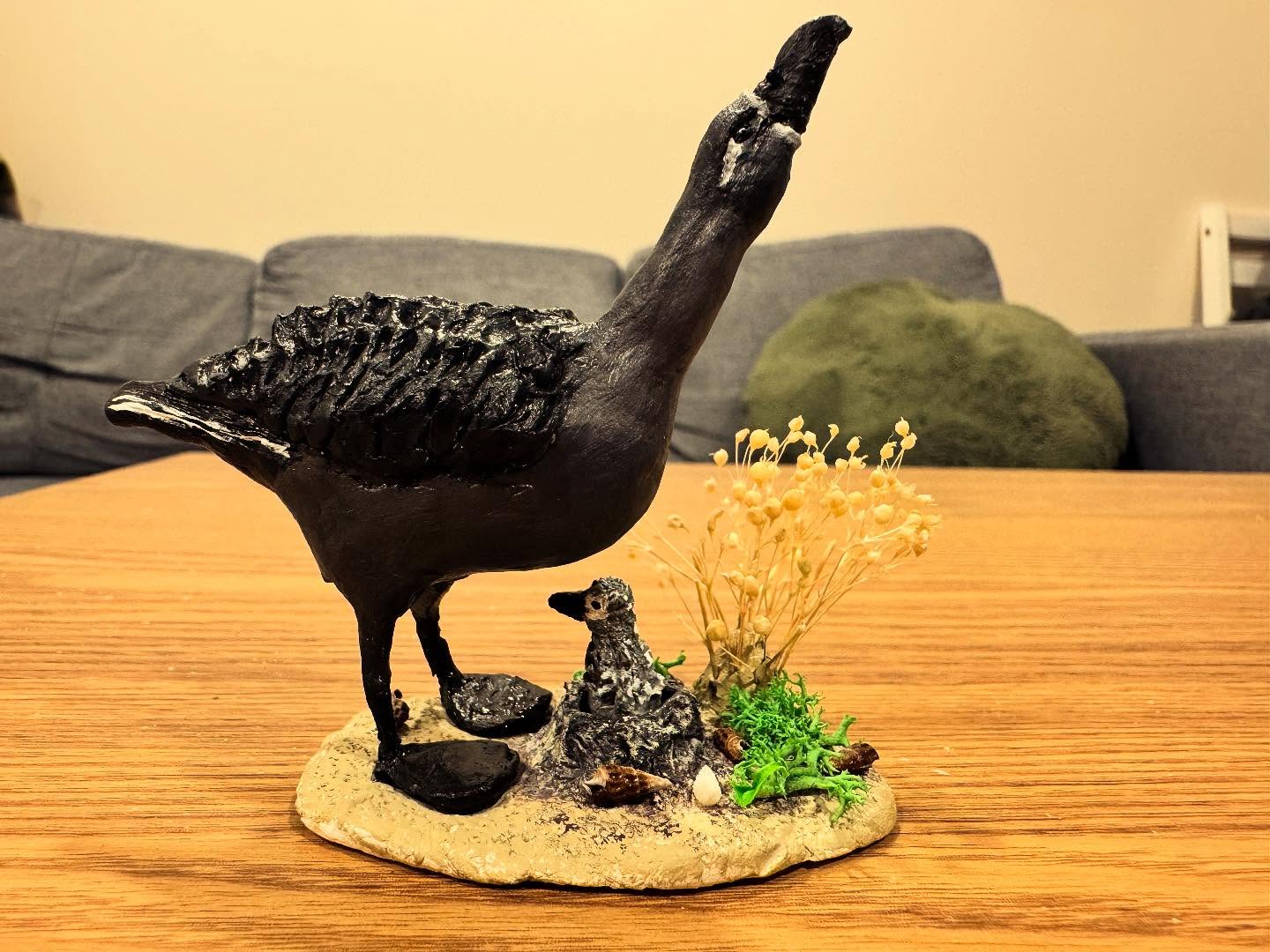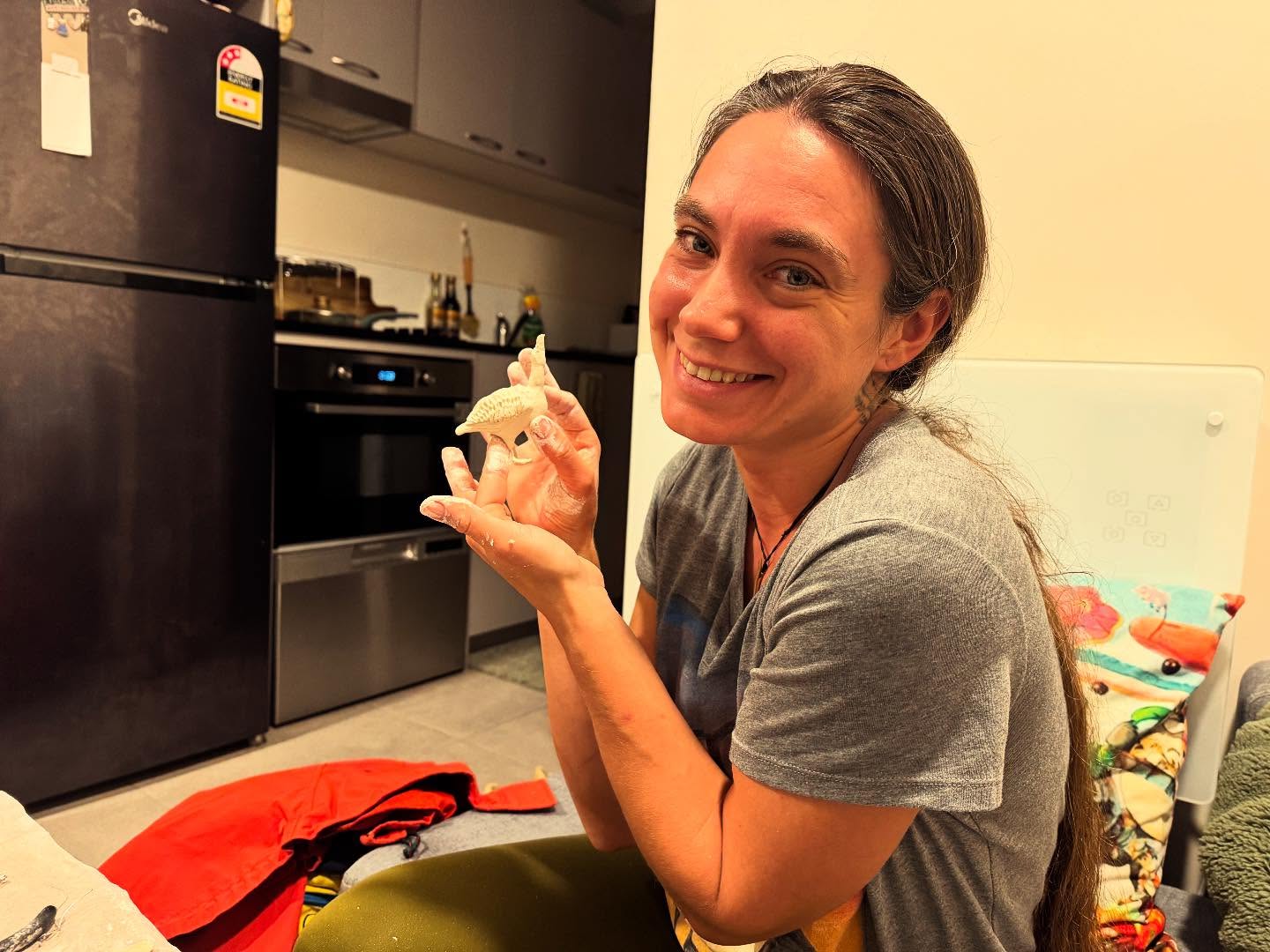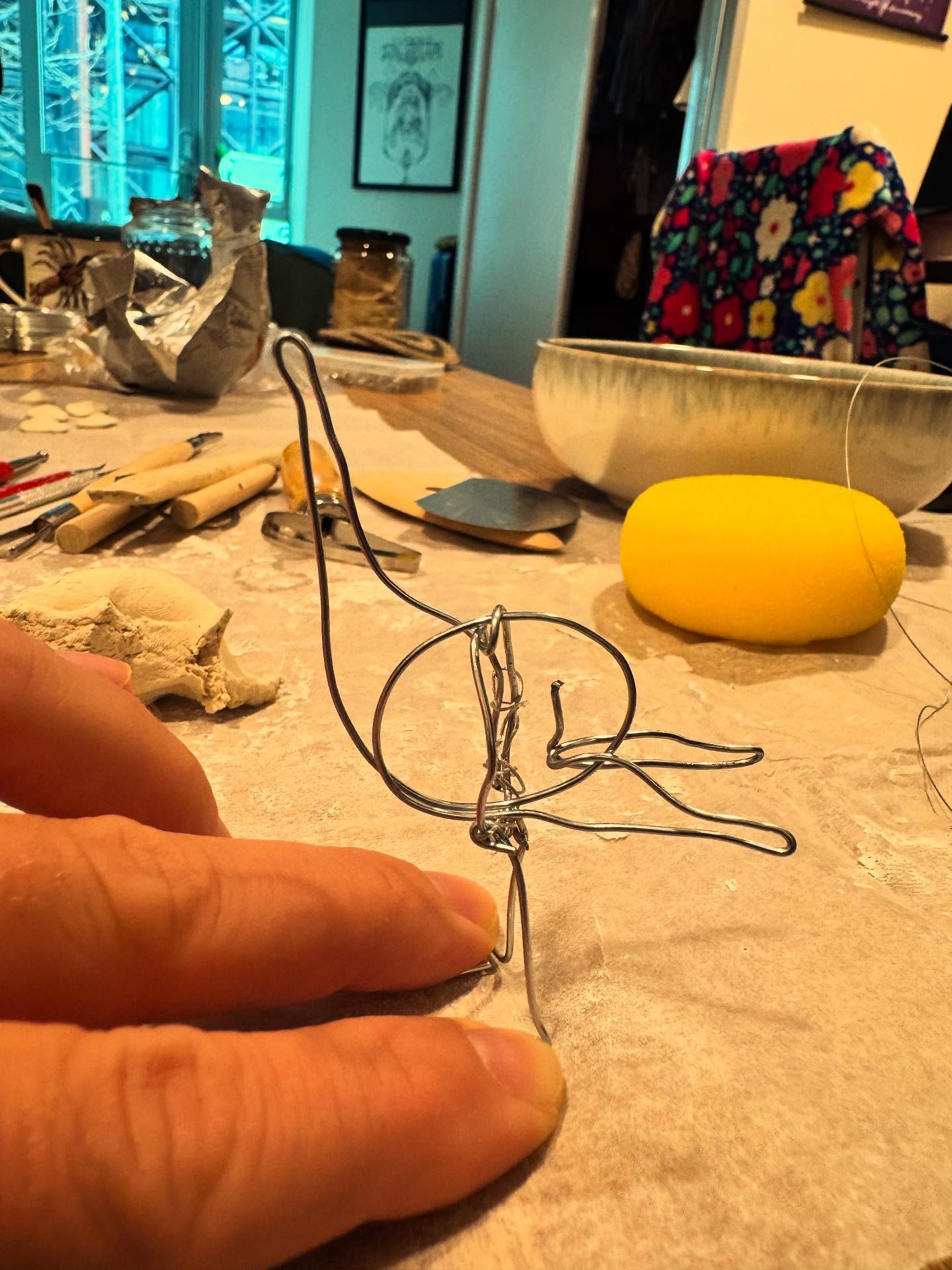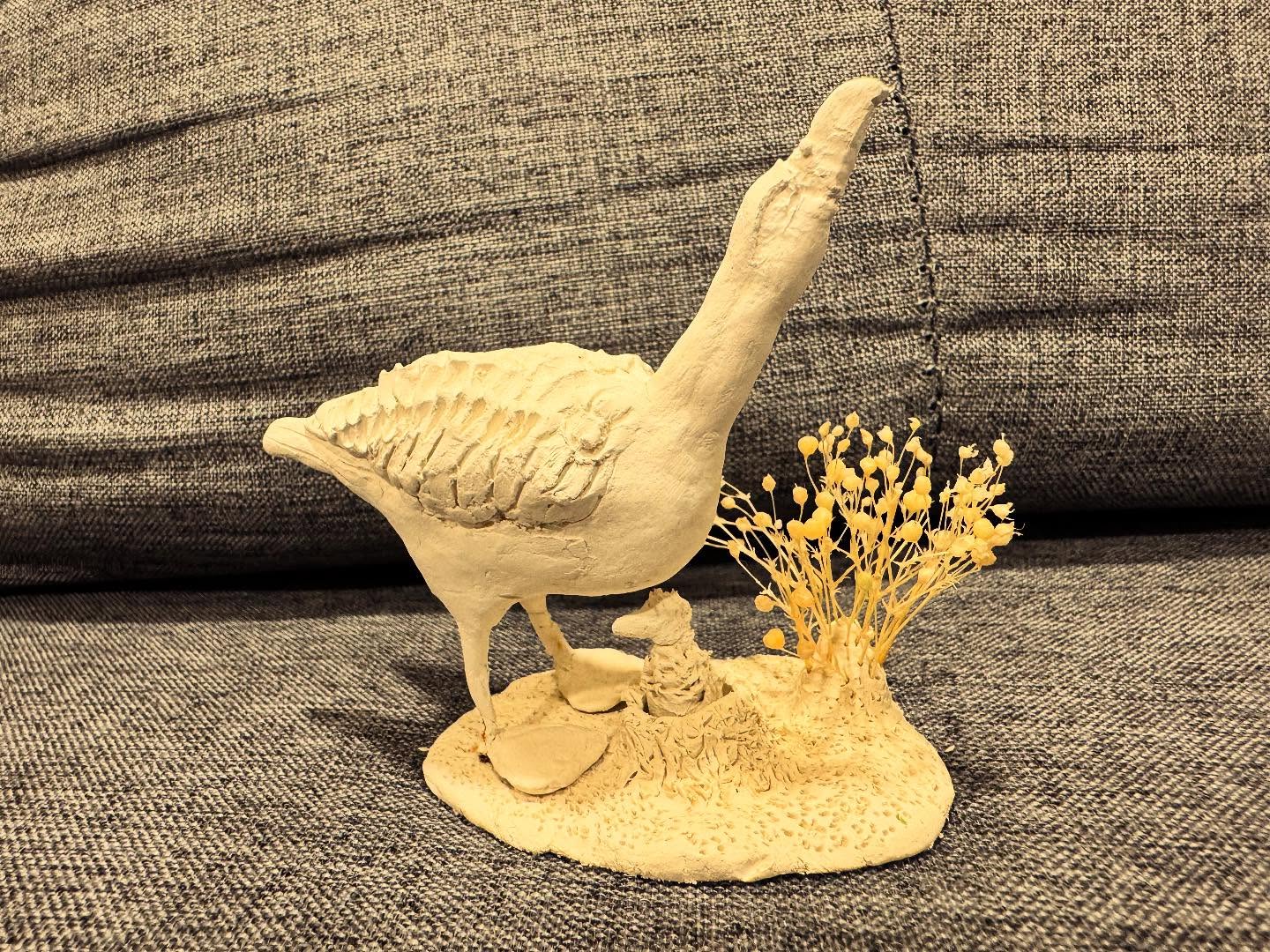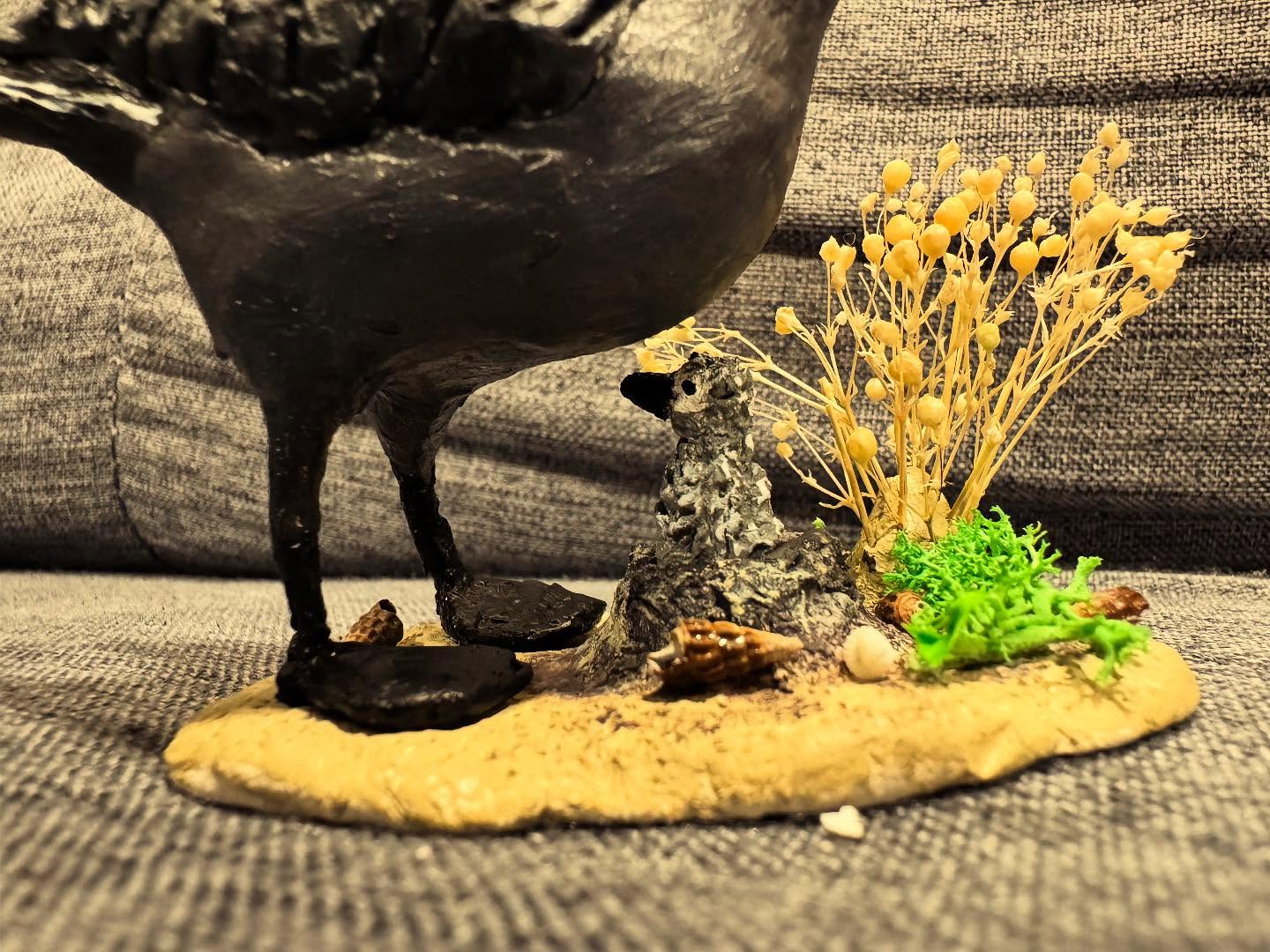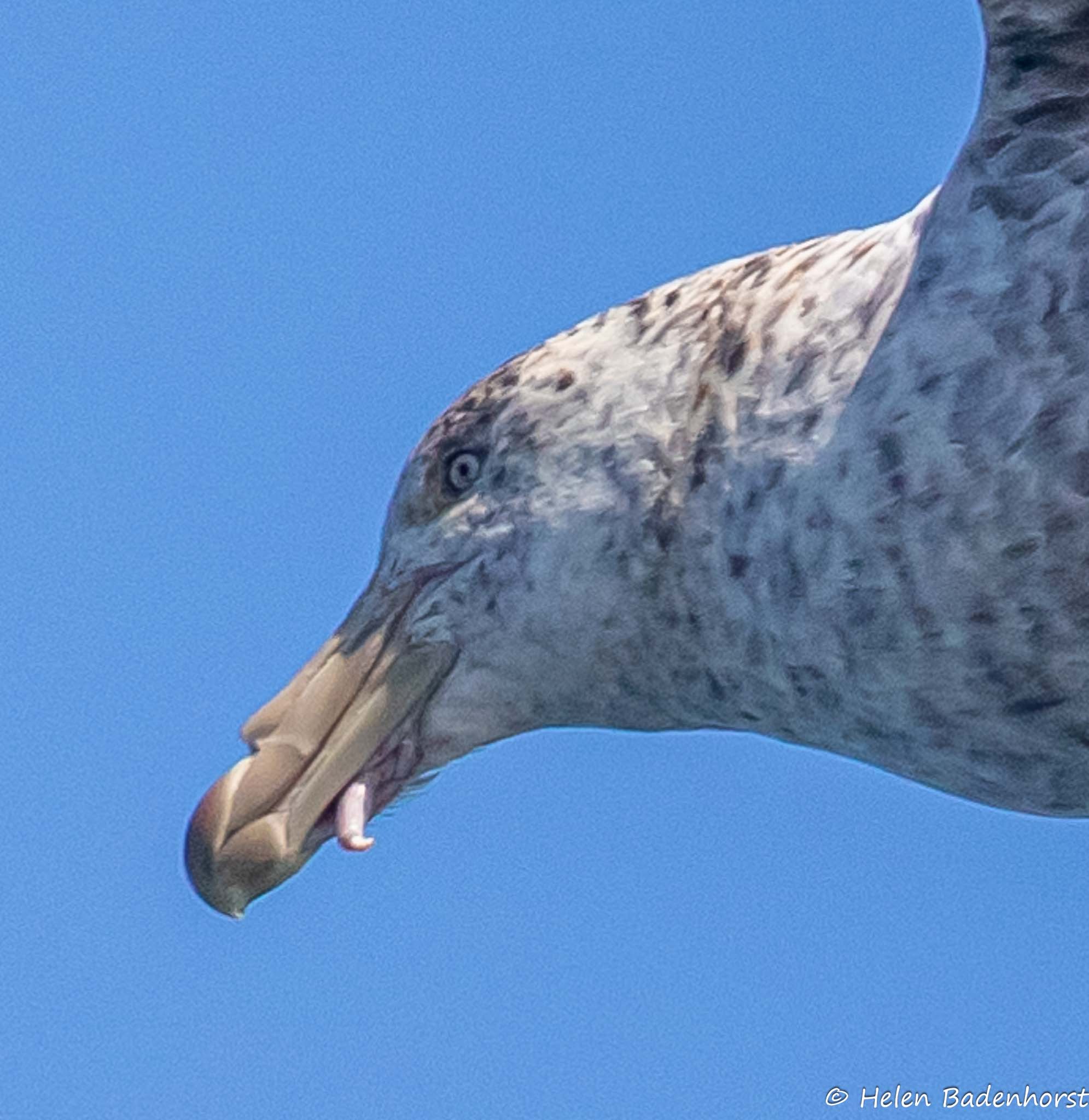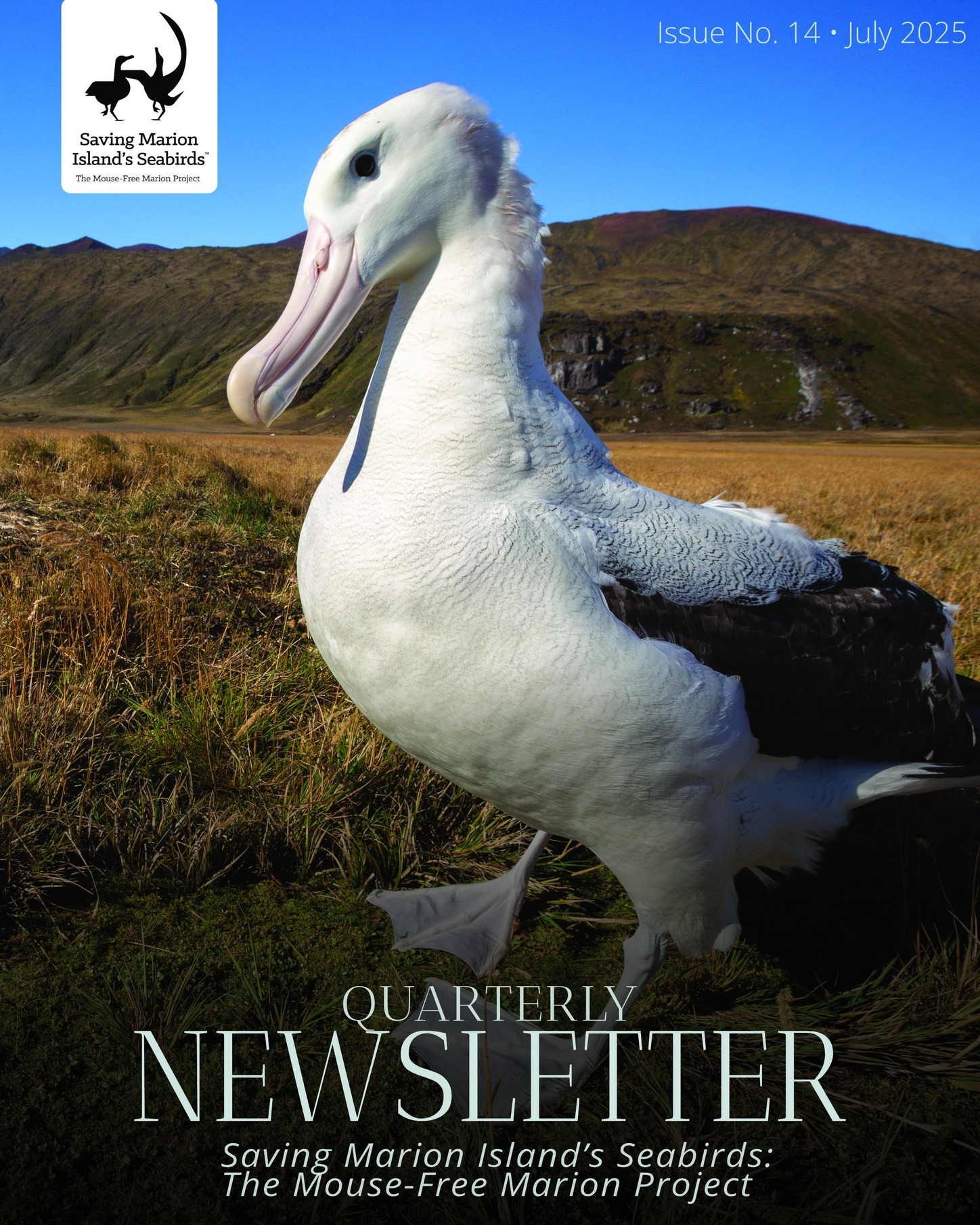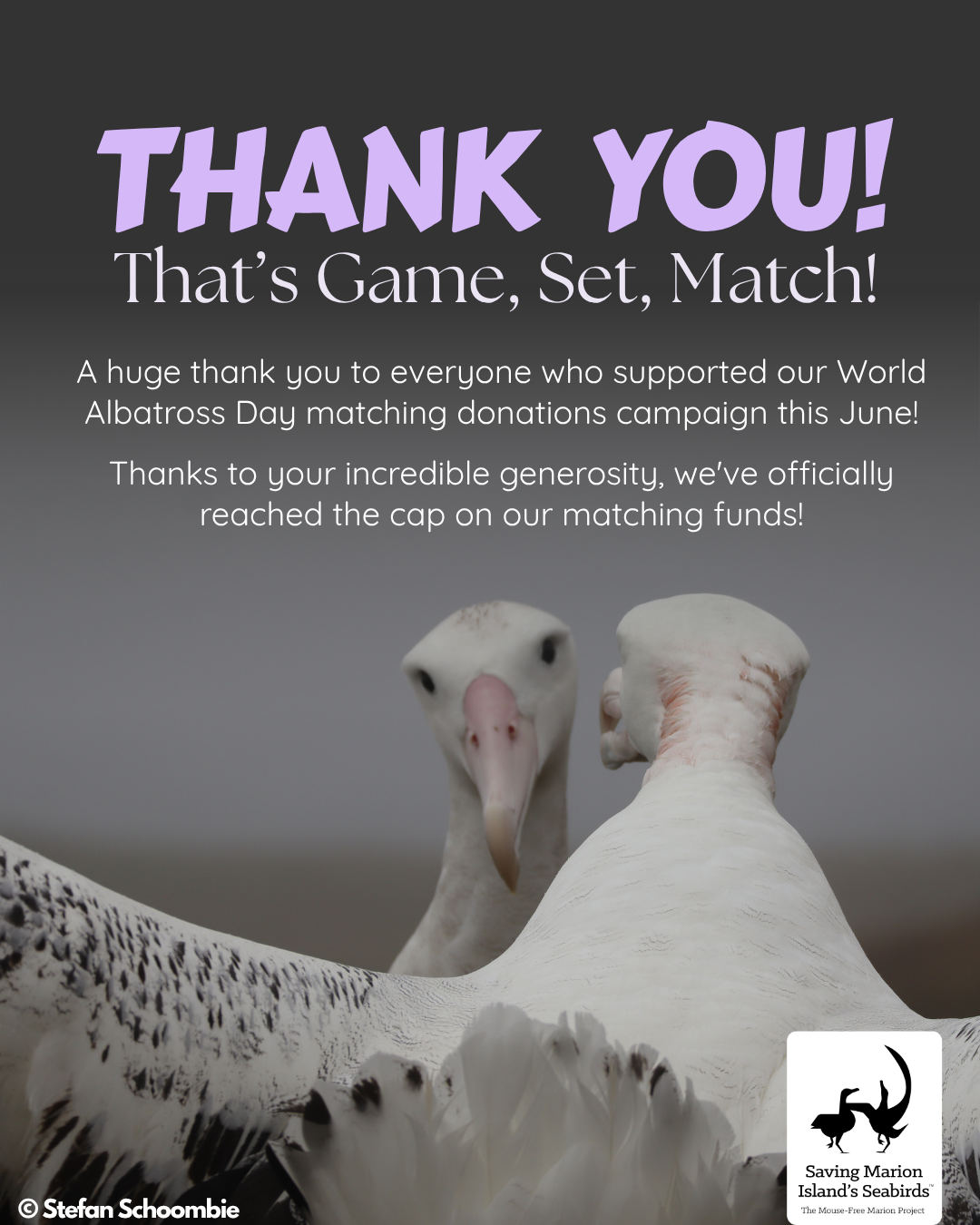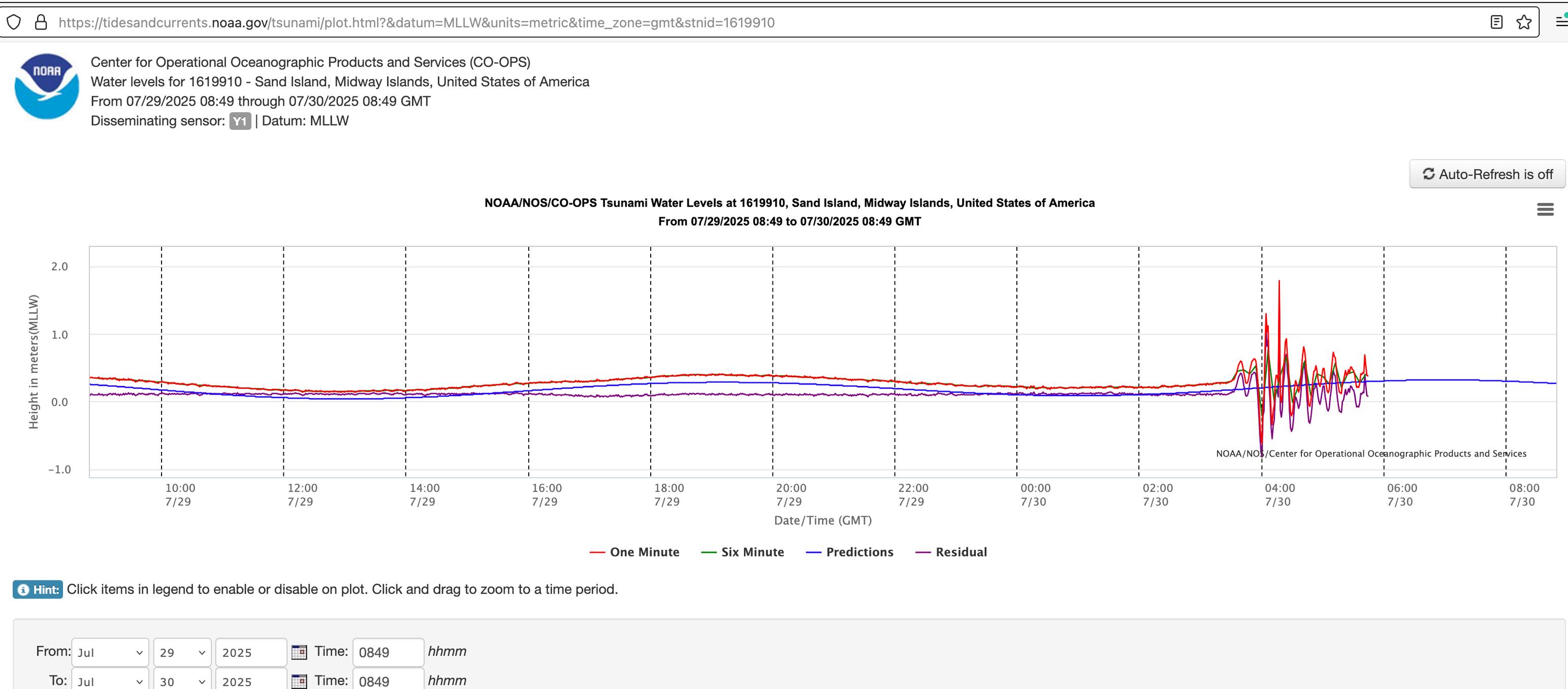
Tsunami signal from Midway Atoll, 30 July 2026
UPDATE FROM THE KURE ATOLL CONSERVANCY: "Updates from the crew stationed on Kure rolled in yesterday. The scene from the pier shows that the high water mark came up the beach but did not inundate the dunes or any of the paths to the interior. The westernmost point of the island is a long sandy spit and there was some overwash there, but overall the impact from the tsunami is minimal".
An earthquake registered at 8.8 off Russia's far eastern Kamchatka Peninsula on 29 July has triggered up to four-metre tsunami waves in the North Pacific. It has been reported as the sixth largest on record. The low-lying atolls of the North Western Hawaiian Islands and their breeding populations of three species of albatrosses and of other ground-nesting seabirds are particularly at risk to being overrun and flooded by climate change-induced sea level rise, tsunamis, and surges and strong winds caused by storms as has happened in the past, leading to the loss, depending on the stage of breeding, of eggs, chicks and adult Black-footed Phoebastria nigripes and Laysan P. immutabilis Albatrosses.
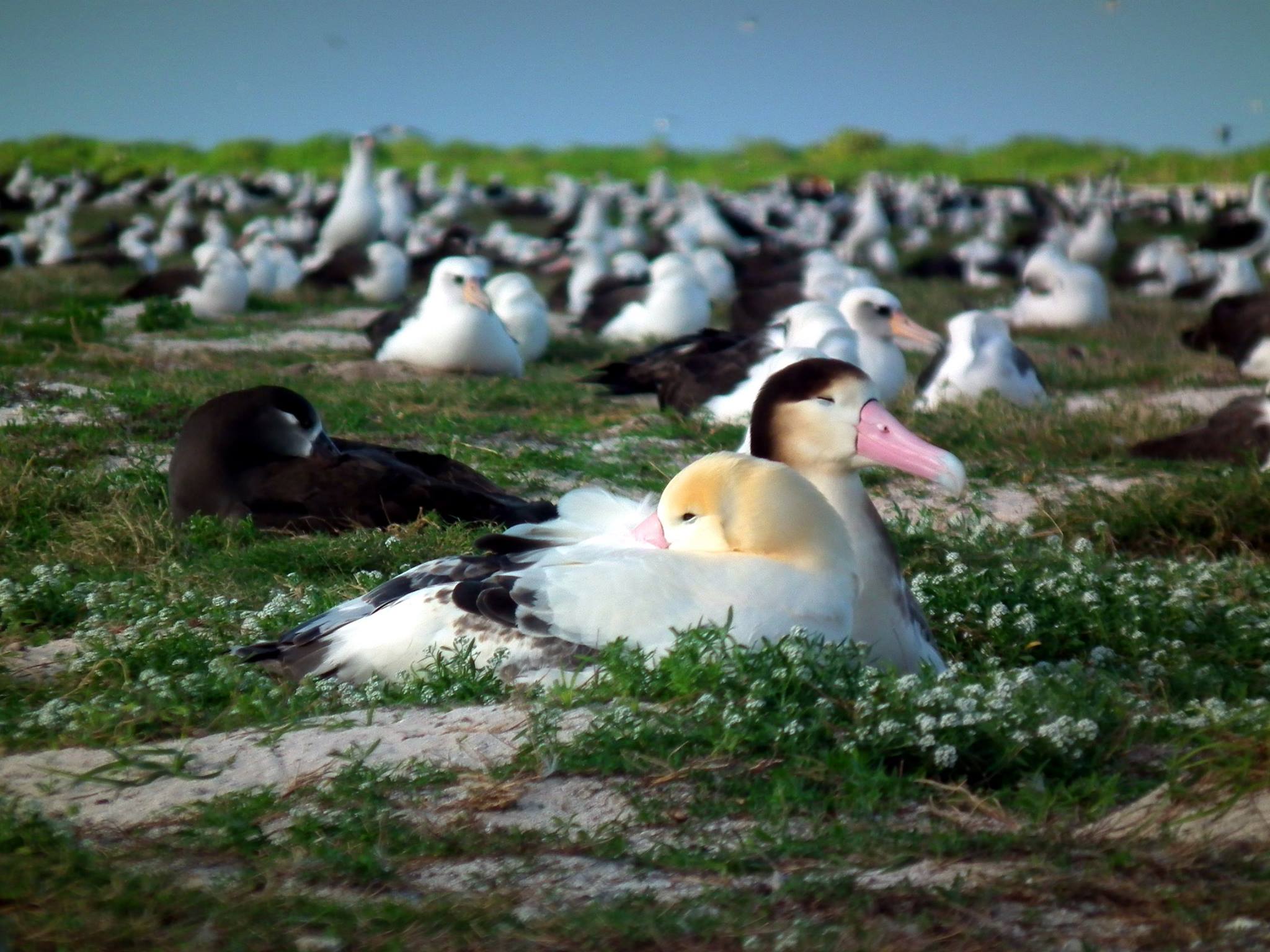
At risk of flooding: a Short-tailed Albatross Phoebastria albatrus pair on Kure Atoll, photograph by Cynthia Vanderlip
At the time of writing, the highest tsunami wave from the 29 July earthquake recorded by the tidal station at Midway Atoll was 1.8 m. It seems likely a similar height occurred at Kure Atoll. Inhabitants on both atolls sheltered above the ground floor in buildings.
ACAP Latest News will continue to track and report on any effects of the tsunami on the Hawaiian albatross-breeding atolls as information comes to hand from those currently living on Kure and Midway.
John Cooper, Emeritus Information Officer, Agreement on the Conservation of Albatrosses and Petrels, 30 July 2025

 English
English  Français
Français  Español
Español 